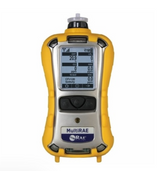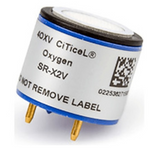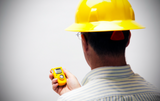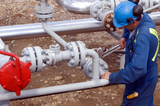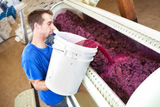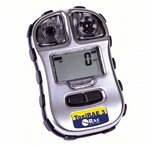Blog
Can My PID Monitor Distinguish Between Multiple VOCs?
Even for people who are quite familiar with
gas detection in industrial or confined space settings, there are some finer points where more explanation is necessary. A customer recently wrote with a question about his PID monitor. He wanted to know if his MultiRAE PID monitor which was set to measure Turpentine would pick up a multitude of volatile organic compounds (VOCs) or if it would only measure the specific gas.
We told him a MultiRAE monitor with a PID sensor can be set to detec
…
Jan 20th 2014
Warranty and Non-Warranty Repair for BW Honeywell Gas Monitors
As a full-service, factory-authorized BW Honeywell Gas Monitor Service Center,
PK Safety can take care of any warranty service your BW gas detector requires. Repairs under warranty are free to the customer and the PK Safety BW Service Center meets all relevant 9001:2008 ISO quality standards. Multiple Level 2 technicians are on staff to quickly take care of even large numbers of monitors quickly. In most cases monitors can be repaired and re-shipped within 24 hours.
The process is si
…
Jan 6th 2014
Microclip XT O2 Sensor Replacement: Replacing Sensors in Your BW GasAlert MicroClip XT Gas Monitor
Gas monitors are sophisticated instruments, but changing sensors is easy. By taking your time and following these simple instructions for replacing sensors, your BW Honeywell monitor will be back in the field in no time.
Remember, new sensors require a few hours to burn in - especially the O2 sensor - so don't turn the monitor on right away. Once you restart the monitor, you may receive a "sensor fail" message. Check through your work to make sure you installed the new sensors all the w
…
Oct 28th 2013
How-to: BW Honeywell Gas Detector Calibration
Calibration is very important for a gas monitor. It reestablishes a base line accuracy for the sensors, both electro-chemical and LEL catalytic bead. In order to perform as they were designed, gas monitors need to periodically be readjusted in the same way a guitar string needs tuning. Calibration of your gas monitors isn't difficult or time consuming (unless you have several hundred monitors, in which case it can be very tedious) and it's essential for accurate measurements over time.
…
Oct 24th 2013
Getting the Right H2S Monitor for Your Site
BW Honeywell makes the most popular single-gas hydrogen sulfide monitor on the planet by a wide margin. The
BW Clip H2S Monitor is an inexpensive, durable, reliable personal gas detector, and it's used on oil rigs and petrochemical plants across the country. But some sites require more than just low- and high-level alarms. That's where a monitor like the GasAlert Extreme and the GasAlert Clip Extreme Adjustable Alarm come in handy.
With a constant readout of gas levels displayed on a
…
Sep 9th 2013
What are the Differences Between Single-Gas H2S Monitors?
Here at PK we sell lots of
gas monitors. A large portion of those sales are for single gas hydrogen sulfide (H2S) monitors. Because we sell several brands and models of single gas monitors, the question is inevitably "what's the difference?"
First let's start with the industry leader in single-gas H2S monitors - the
BW Honeywell Clip H2S Monitor. This is a 2-year, fixed-life monitor that requires virtually no maintenance. With the single-gas BW Clip there's no need to change batte
…
Aug 26th 2013
Gas Monitor Repair and Warranty Information
Gas monitors are made to be used on some of the toughest job sites in the world. Industrial chemical and gas facilities are made for production, not comfort, and the safety of the workers depends on gas monitors doing their job day in and day out.
Because so much is riding on the accuracy of these gas detection devices, regular calibration and testing is necessary. When sensors wear out or are overloaded, or when regular maintenance and re-certification is required, it takes trained tec
…
Jul 25th 2013
How to Purge and Test Natural Gas Mains Using RKI's GX-2012
Crews tackling installation or replacement of natural gas mains need to purge the lines with an inert gas to eliminate the combustion hazard. Purge testing before work begins requires a gas detection device that won't be overwhelmed or damaged by the high gas levels found in this type of work. It's also important to realize that many gas detection sensors require oxygen for accurate measurements.
Nitrogen is the gas most often employed to displace the natural gas when servicing main lin
…
Jul 18th 2013
Winery Gas Monitoring: Why Your Wineries' Gas Monitors Might Not Work
Harvest in the wine country is the peak of activity in the winemaking cycle. It's Go Time - The playoffs of the wine growing season. Preparing for the avalanche of grapes means everything in the winery must be tested, sanitized, and ready. Lab equipment for checking sugar, pH, and total acidity must be made ready, barrels need to be prepped, presses cleaned, and sorting tables sorted. It's also the right time to make sure gas monitors are calibrated.
There can be many areas that require
…
Jun 27th 2013
A Single-Gas Monitor Without a Two-Year Lifespan
Not everybody wants a two-year disposable single-gas monitor for hydrogen sulfide or carbon monoxide detection. Many of today's single gas monitors come with a fixed life span. This type of monitor is helpful for certain gas monitoring programs. There are job sites where a monitor is dropped down a crack or lost under the seat of the truck every day, and an inexpensive monitor is the best choice. But there are just as many sites where close attention to gas levels is a priority and many of th
…
May 29th 2013


